In order to cofigure an ADC, I need to know the input resistance to the ADC Pin of a uC, designated as R_source in the following equivalent circuit:
From R_source the acquisition time TACQ can be read from the following table:
TACQ is what I need to find out.
Now, my schematic looks like this:
The ADC is the grey box at the top right.
My question is now, how can I calculate R_source from R3 and R4?
When the switch closes, the cap looks like a short circuit to the DC. But as the charge increases, more current flows through R4, until the cap is fully charged.



